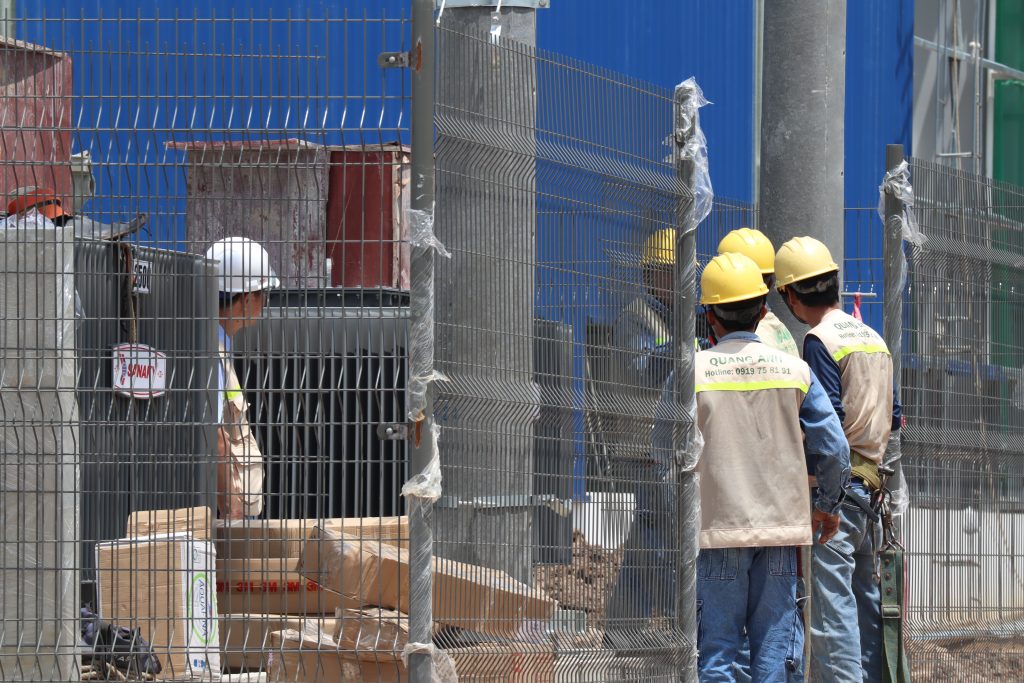News
Transformer Repair in Tay Ninh: Services and Process
Article table of contents:
In Tay Ninh, transformer repair and transformer maintenance services are provided by various entities, involving processes from warranty, replacing damaged parts to handling voltage issues.
Transformer repair services in Tay Ninh
In Tay Ninh, transformer repair services mainly focus on tasks such as warranty, maintenance, and component replacement for transformers from various brands. Lioa Tay Ninh Center stands out as a reliable address to meet this demand, although detailed information about other entities is not specified. Experienced electrical technicians perform transformer repairs to significantly improve the equipment’s performance.
Transformer repair in Tay Ninh is a crucial service for maintaining stable operation of both residential and industrial electrical systems. Usually handled by technical units specializing in electromechanics, this service focuses on transformer maintenance and related equipment. A typical unit offering stabilizer repair services in Tay Ninh is located at 126 Tran Hung Dao Street, Ward 2, Tay Ninh City. This is one of the few locations noted for quality services, not included in larger companies that have been excluded.
Additionally, official warranty centers like Lioa also offer repair and maintenance services for electrical equipment, especially products from this brand. However, it should be noted that these services are usually exclusive to customers purchasing from Lioa’s affiliate distributors and do not apply widely.
Repairing transformers within the electromechanical service sector requires intervention from experienced electrical technicians. Repair techniques not only involve fixing faults but also include periodic maintenance to enhance the device’s durability and performance. Although detailed information about other units outside common factors of electrical engineering services isn’t clear, this confirms the necessity of maintaining optimal operating conditions for electrical equipment in Tay Ninh.
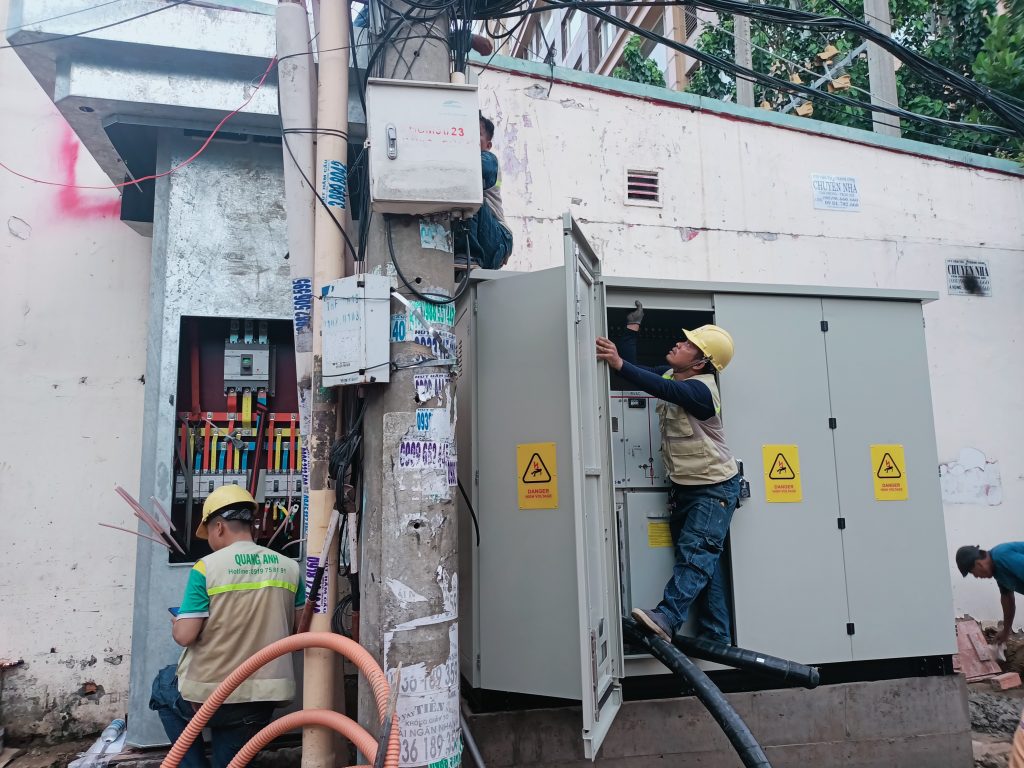
Transformer repair process
The transformer repair process in Tay Ninh includes several steps from inspection, maintenance to replacing damaged parts such as high-pressure insulators, cooling fin welding, and handling overvoltage, overcurrent situations. Periodic transformer maintenance not only helps optimize performance but also extends the equipment’s lifespan, ensuring long-term operational safety.
Transformers are an important part of the electrical system, and transformer repair is a crucial process to maintain stable and safe operation. This process includes various technical steps from initial inspection to maintenance and post-repair testing, ensuring electrical operation safety.
- Initial inspection and fault identification: To optimize transformer performance and ensure electrical operation safety, inspecting the transformer is the first important step. Engineers conduct a comprehensive inspection to identify problems or malfunctions in the equipment. This process includes external observation, technical record inspection, and recording essential data such as temperature and voltage.
- Minor repair (Light repair): Minor repair tasks include fixing minor damages, such as cleaning the case, replacing silica gel, checking valves, gaskets, and cooling systems without oil removal. This is the first step in transformer maintenance aimed at prolonging life and efficiency.
- Regular overhaul: In this process, oil and internal parts of the transformer are disassembled for detailed inspection. Engineers check and repair important parts such as core and winding, simultaneously restoring insulation and drying the equipment to ensure optimal performance.
- Restorative overhaul: This is a more extensive repair step, where components may be replaced or fully repaired, such as rewinding coils, replacing damaged cores. The recovery process aims to return the transformer to its original technical state.
- Disassembly and safety process: To ensure safety, engineers must disconnect the transformer from the electrical supply and remove all oil before disassembling components like auxiliary tanks and cooling systems.
- Post-repair inspection and testing: After repairing the transformer, electrical tests such as winding ratio measurements and insulation resistance are conducted. Testing and load testing are mandatory to ensure stable and safe operation.
- Maintenance and monitoring: Regular maintenance and monitoring of the transformer’s condition are necessary to predict failures and prevent incidents. Tasks include cleaning the transformer station, tightening connections, checking oil temperature, and the function of automatic control systems.
Applying the transformer repair process is not only aimed at ensuring safety and extending equipment life but also at optimizing long-term operating costs. Regular inspections and periodic maintenance help minimize sudden incidents and improve system efficiency.
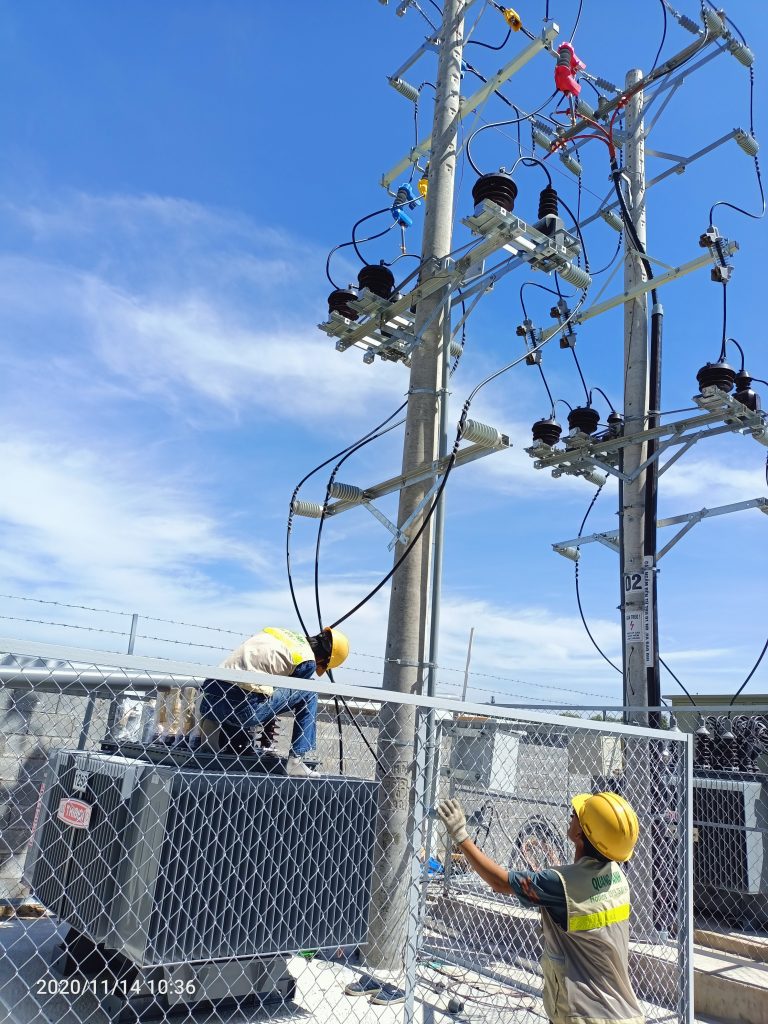
Voltage and current troubleshooting in transformers
Handling voltage and current issues is an important part of transformer repair services in Tay Ninh. Overload or mechanical failure on the transformer is professionally addressed by technicians, ensuring the safety and continuous stable operation of the power grid system.
To ensure the system’s stability and safety, handling voltage and current issues in transformers must be carried out based on a standard process sequence. When abnormal disconnection occurs due to voltage or current problems, the following steps are necessary:
- Check protection operation: First, it is important to verify that protection systems such as differential protection, gas protection, or fast overcurrent protection have been accurately activated. This helps early detection of issues and protects the system from further damage.
- Analyze and identify faults: During transformer repair, engineers need to assess whether the problem originates from the grid system or the transformer itself. This assessment forms the basis for appropriate handling steps.
- Replacement and load distribution: When detecting faults that cannot be immediately repaired, a backup transformer must be replaced. Adjusting electrical load balance is the next step to maintaining stable operation of the entire system.
Additionally, specific issues such as:
- Alarm from Buchholz relay, warnings from protection relays such as cutting due to overcurrent or overvoltage need timely remediation by reducing the load and checking the transformer’s thermal state.
- Sign of leakage or oil shortage requires checking welds, oil float warning, and oil testing to prevent insulation problems.
When detecting severe faults like shorts or internal faults in the transformer, the following steps must be carried out:
- Isolate the transformer: Remove the transformer from the grid and conduct thorough checks.
- Rectify and repair: Fix the transformer in detail to ensure voltage safety and minimize risks to the system.
If relays such as differential, gas relay, or safety valves are triggered, the transformer must be controlled and should not be operated again until inspected and agreed upon by technical leadership and grid control. These steps should be combined closely with periodic transformer maintenance to maintain operational efficiency.
These processes need to be executed in cooperation with the control center for timely reports to avoid widespread negative impacts on the system.
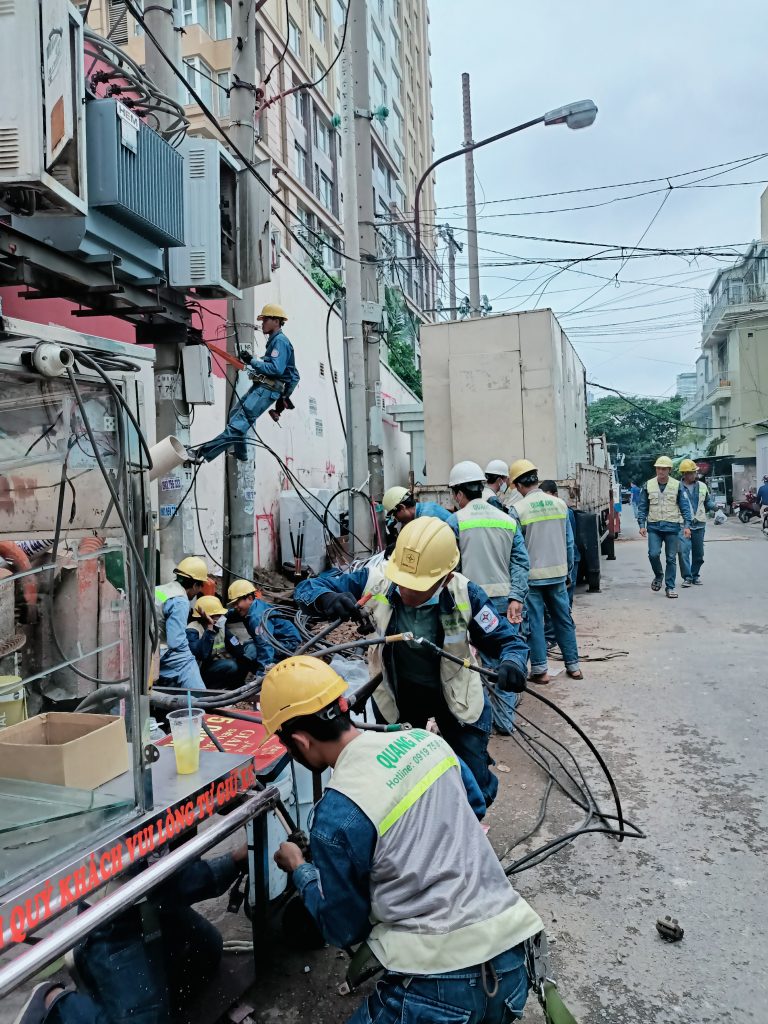
Maintenance and replacement of transformer components
Maintenance of transformers and replacement of components is a necessary task to maintain the equipment’s performance. These tasks usually involve checking, cleaning, and replacing parts like high-pressure insulators, ensuring the machine operates durably and efficiently.
Maintaining transformers and replacing components are indispensable processes in ensuring stable operation and extending the lifespan of equipment. In particular, transformer maintenance demands detailed attention to each system component, from transformer components to overall maintenance and inspection. Below is a detailed guide for this process:
- Inspection and Analysis: The first important step is to inspect and analyze the operational status of the transformer. This helps to early identify potential issues that may occur during operation.
- Transformers cleaning process: Comprehensive cleaning of the transformer and transformer station should be performed periodically to remove dust and residues that may affect the equipment’s performance.
- Check and Tighten: Ensure that all terminal connections, high-voltage, and low-voltage cable connections are checked and tightened accurately. This prevents incidents such as short circuits or explosions.
- Testing and Oil Sample Analysis: For oil transformers, periodically testing oil samples helps assess the insulation and cooling capacity of the oil, maintaining the transformer’s operational effectiveness.
- Check insulation values: This includes between components such as high voltage, low voltage, and chassis, ensuring there is no insulation failure.
- Check physical components: Check casing and bushings, primary and secondary cables, alongside measuring oil temperature are necessary steps to keep the transformer operating under optimal conditions.
- Controller and Power Source Maintenance: Maintaining the controller, AC/DC power source, and inspecting circuit boards and tap changer ensures performance and accuracy in controlling the machine.
- Handling and Strengthening: In the case of oil leakage detection, timely handling is needed to avoid affecting the transformer’s operation. Moreover, advising on strengthening transformer station base to ensure safety.
- Periodic Maintenance and Labor Safety: Perform transformer maintenance during operation or periodically for about a year to timely detect abnormalities. Ensuring labor safety is also an indispensable part of this process.
Correct maintenance and replacement of transformer components will minimize failures, prevent accidents, and ensure the transformer operates safely and stably for a long time.
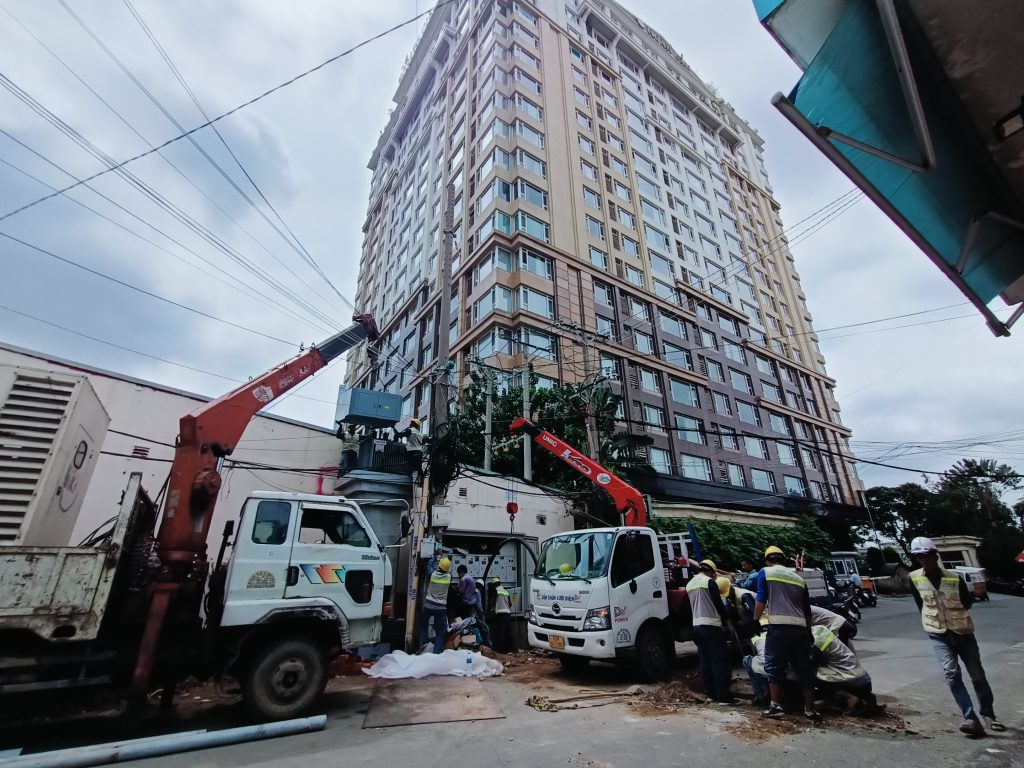
Performing transformer maintenance and repair in Tay Ninh not only optimizes operational performance but also ensures stable and long-lasting device operation. Investing in regular transformer maintenance helps optimize costs and protect infrastructure safety.
To ensure your electrical system always operates stably, contact QuangAnhcons via Hotline: +84 9 1975 8191 for detailed consultations and support.
QuangAnhcons specializes in providing transformer repair and maintenance services in Tay Ninh, with a team of experienced technicians and professional working processes.

 Tiếng Việt
Tiếng Việt 简体中文
简体中文 Deutsch
Deutsch 日本語
日本語 한국어
한국어 ไทย
ไทย Русский
Русский Français
Français
